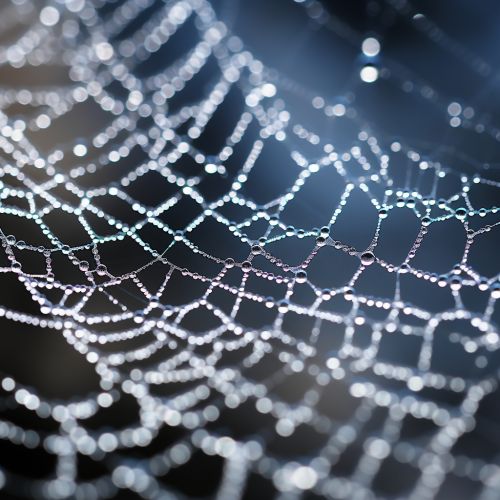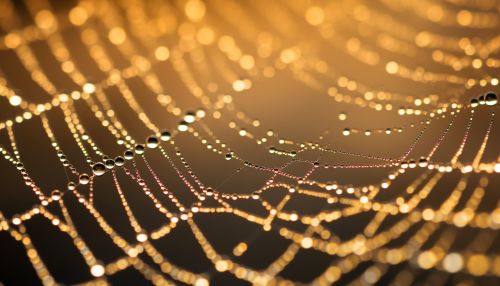Molecular Structure of Spider Silk Proteins
Introduction
Spider silk is a protein fiber spun by spiders. Spiders use their silk to make webs or other structures, which serve as a sticky net to catch other animals, or as a nest or cocoon to protect their offspring, or to wrap up prey. They can also use their silk to suspend themselves, to float through the air, or to glide away from predators. Most spiders vary the thickness and stickiness of their silk for different uses.
In the field of biotechnology, spider silk is a focus of research due to its strength, extensibility and biocompatibility. The understanding of the molecular structure of spider silk proteins is crucial for the development of synthetic spider silk and other biomaterials.


Composition of Spider Silk
Spider silk is primarily composed of a protein called fibroin and is produced in the silk glands of the spider. The exact composition of this protein varies depending on the type of silk being produced – different types of silk are used by the spider for different purposes. For example, the silk used for the structural framework of a web is different from the silk used for wrapping prey.
Structure of Spider Silk Proteins
The proteins that make up spider silk have a unique and complex structure, which is key to the silk's remarkable properties. These proteins consist of two main parts: a core of crystalline structures and a skin of amorphous (non-crystalline) structures.
Crystalline Structures
The crystalline structures in spider silk proteins are primarily composed of repetitive sequences of amino acids, which form tightly packed, organized regions. These regions are highly ordered and have a beta-sheet structure, which is a common protein structure where strands of proteins align parallel or antiparallel to each other and are linked by hydrogen bonds. This structure is responsible for the high tensile strength and toughness of spider silk.
Amorphous Structures
The amorphous structures in spider silk proteins, on the other hand, are composed of less organized regions that do not form a regular pattern. These regions are primarily made up of a random coil structure, which is a type of secondary structure in proteins that is formed when the protein chain does not form an alpha helix or beta sheet structure. The amorphous regions provide the silk with its elasticity and extensibility.
Synthesis of Spider Silk Proteins
Spider silk proteins are synthesized in the silk glands of the spider. The process begins with the transcription of the spider silk gene into messenger RNA (mRNA), which is then translated into the spider silk protein. This protein is initially soluble and is stored in the silk gland until it is needed.
When the spider is ready to spin its silk, the protein is excreted through a narrow duct, where it undergoes a process called shearing. This process aligns the protein molecules and induces the formation of the beta-sheet structure, transforming the soluble protein into an insoluble fiber.
Properties of Spider Silk
The unique structure of spider silk proteins gives spider silk a combination of properties that are rarely found in other materials. These properties include high tensile strength, extensibility, toughness, and biocompatibility.
Tensile Strength
Tensile strength is the maximum amount of tensile (pulling) stress that a material can withstand without breaking. Spider silk has a very high tensile strength – it is stronger than steel and almost as strong as Kevlar, the material used in bulletproof vests.
Extensibility
Extensibility is the ability of a material to stretch without breaking. Spider silk is highly extensible – it can stretch up to five times its original length without breaking.
Toughness
Toughness is a measure of how much energy a material can absorb before breaking. Because of its high tensile strength and extensibility, spider silk is extremely tough – it can absorb more energy before breaking than any other material known to man.
Biocompatibility
Biocompatibility is the ability of a material to interact with a biological system without causing a negative response. Spider silk is highly biocompatible – it can be used in a variety of medical applications without causing harm to the body.
Applications of Spider Silk
Due to its unique properties, spider silk has a wide range of potential applications. These include the development of stronger, lighter and more flexible materials for use in construction, automotive and aerospace industries; the production of bulletproof vests and other protective clothing; the creation of artificial tendons and ligaments for use in medicine; and the development of new types of environmentally friendly, biodegradable plastics.
